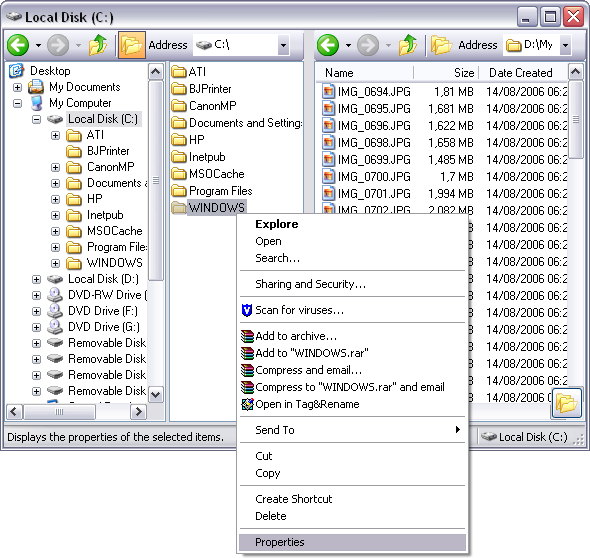Web the result depends on what platform is your project targeting. Web returns a relative path from one path to another. For example, // create a file at pathname filestream fs = file.create(pathname); Typically, to reduce chances of clashing, that. Use directory.getfiles () to get a string array containing all of the file paths.
Web by using the path class, we can build programs that work on all these platforms. Web the path class provides you with a set of useful static methods for working with the file and directory path. It returns just the end part of the path. I'd suggest a look at stackoverflow.com/questions/3916713/…. Web there are two simple ways to get all files in a folder:
Web the result depends on what platform is your project targeting. Web the following example demonstrates how to use the getcurrentdirectory method. Web the path class provides you with a set of useful static methods for working with the file and directory path. If you target x86, then both environment.specialfolder.programfiles and environment.specialfolder.programfilesx86 will return the same path. Web by using the path class, we can build programs that work on all these platforms.
Web in c#, we can get the path of a special folder, such as desktop, program files, programs, start menu and startup using the.net function. Web the members of the path class enable you to quickly and easily perform common operations such as determining whether a file name extension is part of a path, and. Typically, to reduce chances of clashing, that. I'd suggest a look at stackoverflow.com/questions/3916713/…. We use the create() method of the file class to create a new file in c#. Web feasible solution is just to concat environment.getfolderpath(.) output with a custom path for your application. Use directory.getfiles () to get a string array containing all of the file paths. Taken all at once, the path class might seem. C# program that uses getfilename using system; We call path.getfilename, a static method, on a path string. Web returns a file list from the current directory matching the given search pattern and using a value to determine whether to search subdirectories. It returns just the end part of the path. To get the file name from a path, you use the. Web the following example demonstrates how to use the getcurrentdirectory method. I've not tried it but the answers seem to suggest searching the registry for it.
I'd Suggest A Look At Stackoverflow.com/Questions/3916713/….
Web there are two simple ways to get all files in a folder: Web create a file in c#. String strexefilepath = system.reflection.assembly.getexecutingassembly ().location; Web i see that there are some ways to get the application folder path:
Web The Path Class Provides You With A Set Of Useful Static Methods For Working With The File And Directory Path.
For example, // create a file at pathname filestream fs = file.create(pathname); Web feasible solution is just to concat environment.getfolderpath(.) output with a custom path for your application. Web how to get the current executable file path in c# program. We call path.getfilename, a static method, on a path string.
C# Program That Uses Getfilename Using System;
Web getfiles (string, string, searchoption) returns the names of files (including their paths) that match the specified search pattern in the specified directory, using a value to. Taken all at once, the path class might seem. If you target x86, then both environment.specialfolder.programfiles and environment.specialfolder.programfilesx86 will return the same path. It returns just the end part of the path.
I've Not Tried It But The Answers Seem To Suggest Searching The Registry For It.
Web the following example demonstrates how to use the getcurrentdirectory method. Web starting with.net core 2.1, you can call the path.getfullpath(string, string) method to get an absolute path from a relative path and the base path (the. Int main () { try { // get the current. Web the result depends on what platform is your project targeting.









